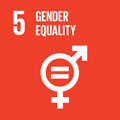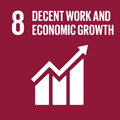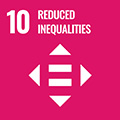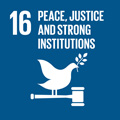- Docente: Cristina Brasili
- Credits: 6
- SSD: SECS-P/02
- Language: Italian
- Teaching Mode: In-person learning (entirely or partially)
- Campus: Bologna
- Corso: First cycle degree programme (L) in Statistical Sciences (cod. 8873)
-
from Feb 11, 2025 to Mar 21, 2025
Learning outcomes
The course would make the students be able to analyse the economic policies and their effects on the economic and social development.
The student knows the structural economic problems of Italian economy (local development, public debt, Southern-Northern differences, employments).
The student could be understand and analyse the principal economic documents.
To reach these objectives the students will be able to use the most important national and international data bases to study the economical policies (Regio- Data Base Eurostat, Istat-Data Base).
Course contents
Introduction to political economy (1 hour);
Italian policy economy (13 hours)
- The development and the Italian economic trends in the latter postwar;
- The Italian endogenous models and local systems, the industrial districts and the globalization;
- Measure of Territorial Capital
- Territorial development policies. From the Cassa per il Mezzogiorno to EU regional policies. Similarities and differences.
- Fair and Sustainable Welfare (BES) indicators: Amartya Sen's theory as a background and targets for Italian economic policy.
-Structural problems of the Italian economy and economic policy measures (4 theoretical hours and 2 laboratory hours):
- Poverty in Italy and the adoption of the Citizenship Income
- the South and the end of the extraordinary intervention, employment and unemployment.
-The public debt in Italy
The main EU policies (8 hours and 2 laboratory hours)
The role of the Italian economic policy in the European contest;
-EU Cohesion Policy: History, Principles and Characteristics
-SNAI strategy Internal Areas as policy Multilevel governance
-Implementation in Italy: opportunities and problems
- The single market, the Maastricht agreements, the economic and monetary union;
The EU budget 2021-2027. The planning cycle of the Cohesion Policy 2021-2027 and RRP plan for Italy (2 hours)
-The future of European policies in light of the Covid-19 health emergency of 2020
- The programming cycle of the Cohesion Policy 2021-2027
Given the issues addressed in this Economic Policy course, it contributes to greater awareness and, therefore, to the achievement of the objectives, 5, 8, 10 and 16, of the 17 UN Sustainable Development Goals (SDGs).
Readings/Bibliography
Documents about European and Italian Economic Policy that can be downloaded from the web-site "Virtuale", slides and some chapters/paragraphs indicated in the last slide related to the topic:
Politica Economica – Valli, 2005 Cap.1 e Cap. 4
Politica Economica Volume I – Valli, 1998 Cap.13 e paragrafi 14.1, 14.2, 14.3, 14.4, 14.5 e 15.5
Politica Economica – Valli, 2005
Mezzogiorno a tradimento – Viesti – Cap.3
Le cause del divario Nord-Sud in Italia e gli effetti delle politiche pubbliche sulla società nel Mezzogiorno, tesi SVIC di Alessandra Buonaiuto
Politica Economica – Valli, 2005 - Par. 5.8
Lo sviluppo locale – Ciapetti, 2010
Il distretto industriale Marshalliano come concetto socio-economico - G. Becattini, 1991
LA GOVERNANCE NEI DISTRETTI INDUSTRIALI DEL TERZO MILLENNIO Il caso della Regione Marche e l’area di crisi industriale complessa del Fermano Maceratese, tesi di laurea Svic di M. G. Paccapelo a.a. 2019/2020 SVIC
Le nuove politiche regionali dell'Unione Europea – Viesti, Prota – Cap.1 e 2
Politica Regionale – Commissione Europea [http://www2.stat.unibo.it/brasili/polec_2017/regional_policy_it.pdf]
I fondi strutturali europei: otto lezioni dall'esperienza italiana – Viesti, Luongo 2014
Le nuove politiche regionali dell'Unione Europea – Viesti, Prota – Cap.7
Le nuove politiche regionali dell'Unione Europea – Viesti, Prota – Cap.8
Investire nelle regioni: la riforma della Politica di coesione dell’UE 2014-2020
Sintesi dell’accordo di partenariato per l’Italia, 2014-2020, European Commission 2014
Accordo di partenariato 2014-2020 Italia allegato 1 risultati attesi - azioni
Politica Economica Europea - Valli, 1999 par.2.2 e 2.3
Politica Economica e Macroeconomia Vittorio Valli e altri, paragrafi 7.6, 7.7, 7.8 (2010), Ed. Carocci
Padoa-Schioppa Tommaso, L’Euro in prospettiva storica, il Mulino, n.399, 1/2002
La finanza pubblica e il debito pubblico Dott.ssa Arianna Moschetti Da pag 10 a pag 13 E da pag 21 a pag 45
Relazione dell’Unione sulla lotta alla corruzione (2014)
Relazione dell’Unione sulla lotta alla corruzione – foglio paese Italia (2014)
Letture integrative:
Rapporti BES 2018, 2019 e 2020
Istat, I distretti industriali 2011
I distretti industriali del Terzo Millennio – F. Guelpa, S. Micelli, 2007 Cap.1
I distretti industriali del Terzo Millennio – F. Guelpa, S. Micelli, 2007 Cap.7
Lo sviluppo è libertà – Sen, 2000
La povertà in Italia - Sintesi Rapporto Istat 2016 (13/07/2017)
Città e sviluppo locale – Bertini, Brasili, 2014
I “nuovi” distretti agroalimentari tra i “nuovi” distretti industriali- C. Brasili, R. Fanfani
Nel DEF 2017 per la prima volta gli indicatori BeS
Il Quadro Strategico Nazionale 2007-2013
Mantovani A., Mattarin L, Economia dell’integrazione europea, Il Mulino, Bologna 2008 (cap 5 pp. 163-200)
Bordignon, Turati (2022) DEBITO PUBBLICO come ci siamo arrivati e come sopravvivergli, PICCOLA BIBLIOTECA PER UN PAESE NORMALE - VITA E PENSIERO
I numeri della corruzione (Corruption's numbers) – C. Brasili (2012)
Roberto Basile, Luisa Giallonardo, Marcella Mulino (2023) Economic policy, third edition Ed. Wolters Kluwer Italy (CEDAM)
Teaching methods
The teaching method followed is to theoretically address a problem of economic policy (through lectures, 30 hours) and then to show the empirical analysis approach through the use and discussion of databases and data related to the problem addressed in the lectures in the computer lab (6 hours).
Furthermore, 4 hours of laboratory on the Economic Policy databases will be added if the teacher is supported in teaching by a Tutor.
Assessment methods
The verification of the degree of learning of the topics covered will be conducted through the written or oral exam (different modality between the first three sessions and the last).
The first two sessions are useful for achieving the requirements for those wishing to graduate in July.
The three appeals will consist of written tests each of an hour and a half, with the methods described below.
Students will have the choice of 1 question (out of 2), divided into 5 points (all to be covered, each point covered is worth a maximum of 7/35 and for each point not covered, 2 will be subtracted from the score obtained). By adding up the evaluation of the different points, if the score is exceeded by 30, the Honors is also obtained.
The questions relating to the laboratory lessons require the consultation of the attached data tables and graphs
The script provides for a maximum number of lines to be written for each point (which may vary from question to question, with 12 Times New Roman font).
The fourth appeal, January 2024 is still to be defined, it will be oral and the questions will be set as for the written one.
The evaluation of the oral exam will be given according to the criterion:
• Sufficient preparation and analytical skills, expressed in a formally correct language → 18-22;
• Technically adequate preparation, sufficient analytical skills, even if not particularly articulated, expressed in correct language → 23-26;
• In-depth knowledge of the topics covered in the course, good analytical and critical skills, mastery of specific terminology → 27-29;
• Very in-depth knowledge of the topics covered in the course, critical analysis and connection skills, mastery of specific terminology → 30-30L.
At the end of the course students are expected to hold the following competences:
-
Knowledge of EU economic policies and their relations with Italian and International economic policies;
-
Ability to apply methods and tools presented during the course;
-
Ability to discuss the outcomes of the empirical analysis in the light of recent literature and current political economy strategies.
Teaching tools
Reading materials can be found at:
Unibo Virtuale - Università di Bologna https://virtuale.unibo.it
Lessons will not be recorded.
Office hours
See the website of Cristina Brasili
SDGs




This teaching activity contributes to the achievement of the Sustainable Development Goals of the UN 2030 Agenda.
